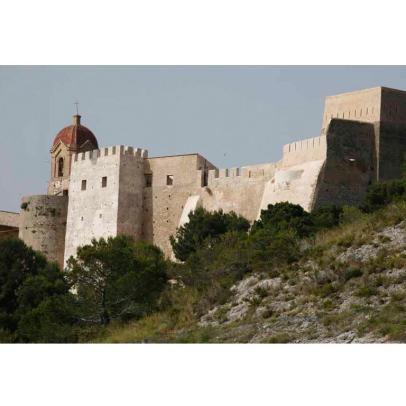This is an Arab castle, which dates back to the Caliphate period and was built in the 10th century. Alterations were made after the Aragonese conquest (13th century), following instructions by James I the Conqueror. Although most of the walls have been destroyed, the towers are very well preserved.
The castle is situated on the top of the hill Raboses, about 200 metres in height. The hill overlooks Cullera and the bay as well as an important stretch of the plain region known as La Ribera Baixa and orchards. Several centuries after the Muslim conflicts, alterations were made to the castle, including the insertion of bastions, ravelins and artillery in the towers to guard the castle from pirate attacks. New modifications and upgrades were made to the castle in the 19th century, which is why the fortress of the present day is a very different building from the original 10th century Caliphate fortress.
The complex consists of the following elements: the fortress itself, two fortified enclosures, Alt del Fort and five towers. A sanctuary in honour of the virgin was constructed adjacent to the castle in the 19th century. The remains of the old wall, which were used to build the walls of the houses after the city walls were knocked down, are dispersed in the old city centre of Cullera.
The link between El Cid and the castle is literary: according to El Cantar, Cullera was plundered by El Cid in his campaign against Valencia. After the battle of Sagunto, El Cid raided a great part of the taifa of Valencia, launching quick attacks at night, gaining thereby control of Cullera, Xàtiva and Denia. After the conquest of Valencia, the Almoravid king Yussuf crossed the straits in the company of 50,000 men to recover the city, but he was vanquished by El Cid in a pitched battle. He had to take refuge in Cullera.
Visits: Ticket admission. Check opening hours and ticket prices at the tourist office.
Rev. PAB 27.12.18


